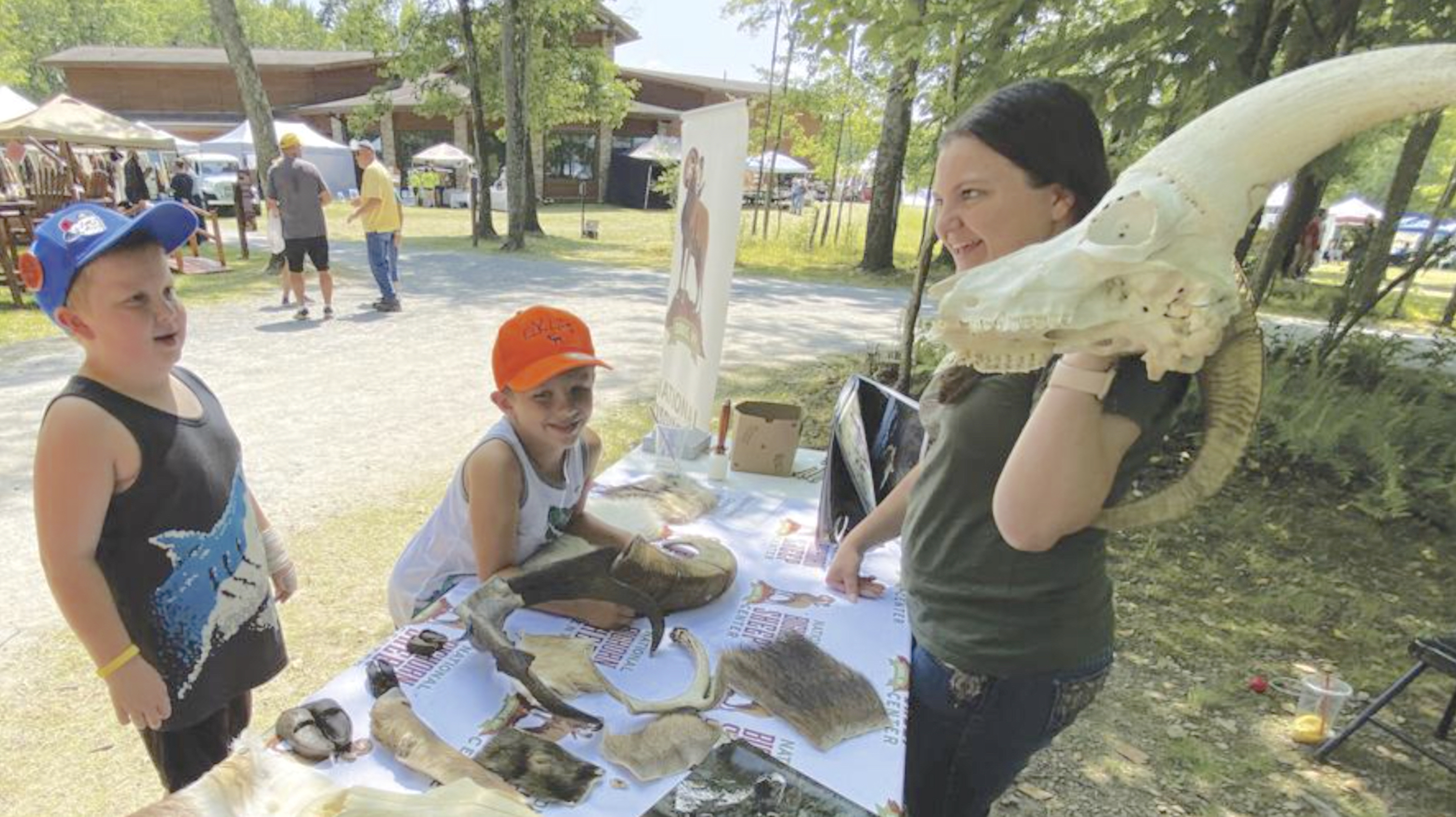The next generation of Bighorn sheep conservation

A representative of the National Bighorn Sheep Center at the Riverton Museum teaches children about Rocky Mountain Bighorn sheep. Courtesy photo.
RIVERTON — Four decades ago, Fremont County was home to the largest herd of Rocky Mountain Bighorn sheep in the lower 48 states – an estimated 2,500 animals.
By the early 1990s, disease – particularly pneumonia often transmitted from domestic sheep – shrunk the population to around 200.
Known as the Whiskey Mountain herd, these charismatic grazers spend their winters just outside Dubois, resting on the relatively warm and dry grassy slopes before returning to the high country come spring.
Evidenced by ancient pictographs and petroglyphs spread out across the American West, Bighorn sheep have pervaded the human imagination – and the human diet – for thousands of years. Because of their delicate sensitivity to human-induced environmental problems, the presence of bighorns is considered a marker of land and ecosystem health.
Now, a movement of coinciding conservation efforts is pushing to return bighorn herds including Whiskey Mountain to a strong and self-sustaining status.
On Friday, June 14, kids in Fremont County will have an opportunity to join these efforts through a series of educational activities hosted by the National Bighorn Sheep Center at the Riverton Museum.
“Our goal is to illustrate the effects of disease on Bighorn sheep populations,” said Beth Cable, education manager at the National Bighorn Sheep Center. “We’ll run a kind of simulation where kids can pretend to capture and test sheep – collecting nasal swabs, taking weights, and checking for signs of respiratory illness.”
This simulated “sheep health check” will allow children of all ages to role-play as wildlife biologists, performing tests on model sheep and internalizing the technical nature of adaptive wildlife management and conservation. In addition to the hands-on health check, NBSC staff will charm attendees with neat facts regarding bighorns’ ecology, social structure, and cultural significance.
One fascinating tidbit that Cable shared: During rutting season, male Bighorn sheep collide head-first at speeds of up to 40 mph.
“To protect their brains from those impacts, they have a unique honeycomb-like structure in their skulls filled with fluid – it acts like an internal helmet,” she explained. “We actually have cross-sections on display at the center comparing wild and domestic sheep skulls so visitors can see that adaptation up close.”
If the program delivers its intended outcome, participants will take on a personal investment in local efforts to support healthy herds.
“The Forest Service and Game and Fish have recently been working on clearing encroaching vegetation like junipers and limber pines east of Dubois,” Cable noted. “This improves habitat and helps sheep detect predators more easily.”
Meanwhile, some Fremont County residents continue to advocate for bighorns to be reintroduced into zones where they previously thrived, like Sinks Canyon and Sweetwater Rocks. These efforts have faced controversy, often in the form of concerns from agriculture producers who fear the presence of sheep could impact their grazing leases.
Last year, Wyoming Game and Fish personnel killed three young bighorn rams that had wandered into Sinks Canyon State Park, citing a state policy that aims to prevent the spread of lethal disease to other wild sheep. Many outspoken locals did not believe the culling was justified.
Despite the practical and political challenges of Bighorn sheep conservation, the NBSC remains focused on providing eco-tours, school programs, and interactive exhibits on the biology and ecology of wild sheep.
Anne Gebo, program, education, and volunteer coordinator at the Riverton Museum, said she’s excited to welcome the Bighorn Sheep Center and hopes the event will inspire curiosity and conservation-minded thinking.
“It’s a fun and memorable way for kids to learn about science and wildlife,” Gebo said. “We’re thrilled to help connect families with the natural world right here in Fremont County.”
The June 14 “sheep health check” event is free and open to the public. For more information, contact the Riverton Museum at 307-856-2665.
This story was published on June 11, 2025.






